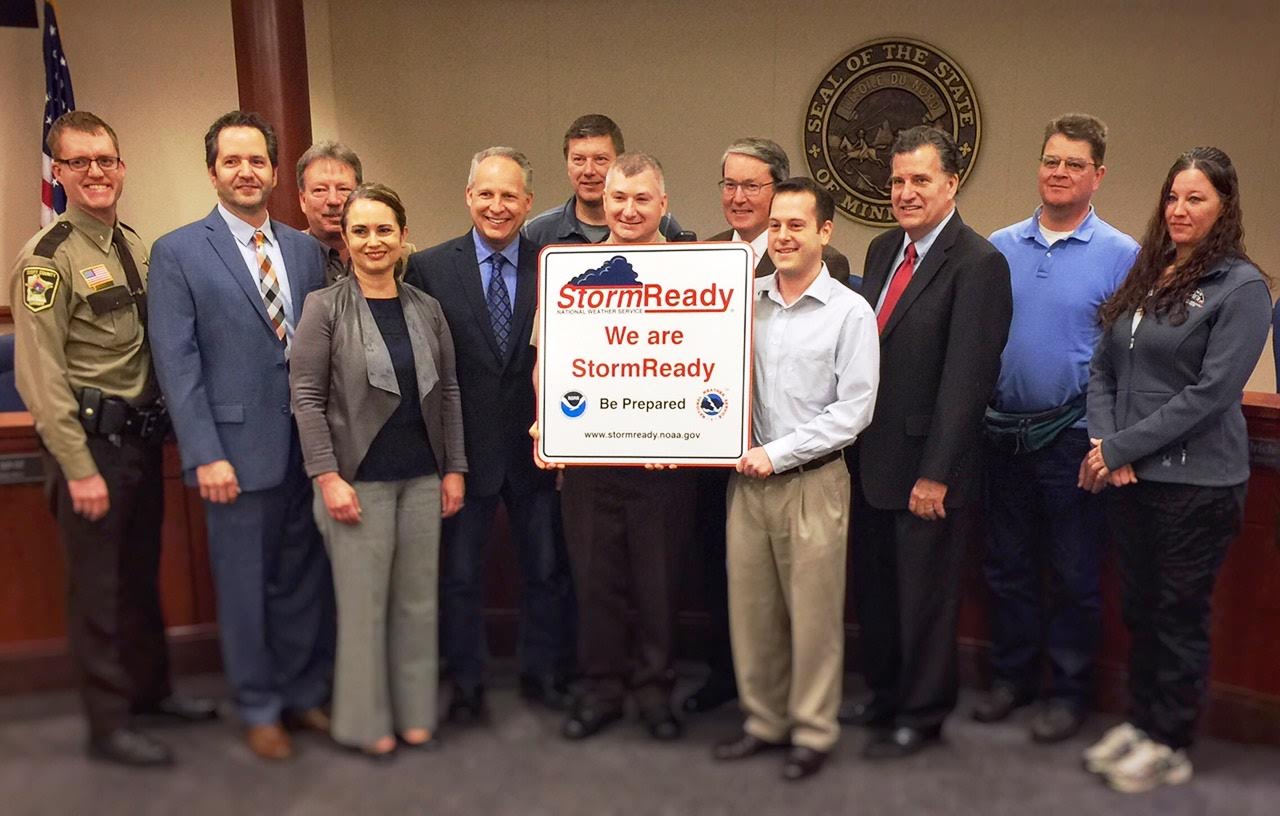
Strong to severe thunderstorms and heavy rain will impact portions of the central Plains into the Upper Midwest and the Mid-Atlantic through the weekend. A stretch of unusually hot and humid weather is expected across portions of the central U.S. and the Southeast beginning this weekend and continuing through next week. The heat may reach dangerous levels, particularly mid to late next week. Read More >
The National Weather Service certified Scott County, Minnesota as StormReady at the county board meeting on Tuesday, February 21. Scott County is the twelfth county in Minnesota and the third in the metro area to receive such status. The National Weather Service enjoys a strong relationship with Scott County.

Pictured from left to right: Sheriff Luke Hennen, Commissioner Dave Beer, SAFCOM Board Member Mark Lannon, Commissioner Barb Weckman-Brekke, Commissioner Tom Wolf, SAFCOM President Todd Anderson, Scott County Emergency Management Director Scott Haas, Commissioner Michael Bear, NWS Senior Meteorologist Bill Borghoff, Commissioner Jon Ulrich, SAFCOM Board Member M. Rowland Hill, SAFCOM Board Member Pam Boomgaarden.
Americans live in the most severe weather-prone country on Earth. You can make sure your community is StormReady. Some 98 percent of all presidentially declared disasters are weather related, leading to around 500 deaths per year and nearly $15 billion in damage. The StormReady program helps arm America's communities with the communication and safety skills needed to save lives and property--before, during and after the event. StormReady helps community leaders and emergency managers strengthen local safety programs.
StormReady communities, counties, Indian tribal governments, universities and colleges, military bases, government sites, commercial enterprises and other groups are better prepared to save lives from the onslaught of severe weather through advanced planning, education and awareness. No community is storm proof, but StormReady can help communities save lives.
StormReady uses a grassroots approach to help communities respond to extreme weather—from tornadoes to hurricanes. StormReady helps communities respond to hazardous weather by providing emergency managers with clear-cut guidelines on how to improve their hazardous weather operations. Applying is easy. To be officially StormReady, a community must:
To apply, please visit the following link for more information: https://www.weather.gov/stormready/become